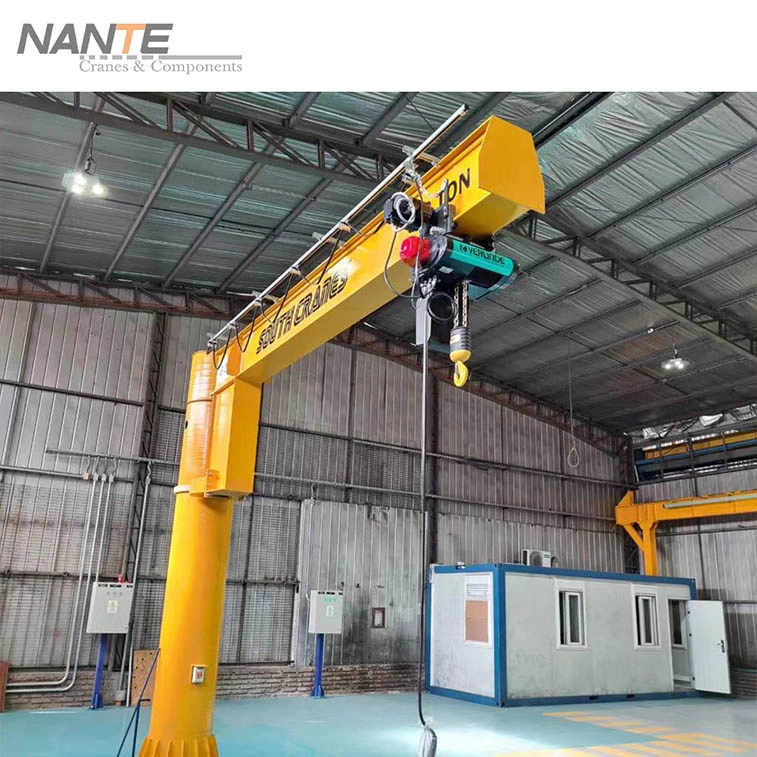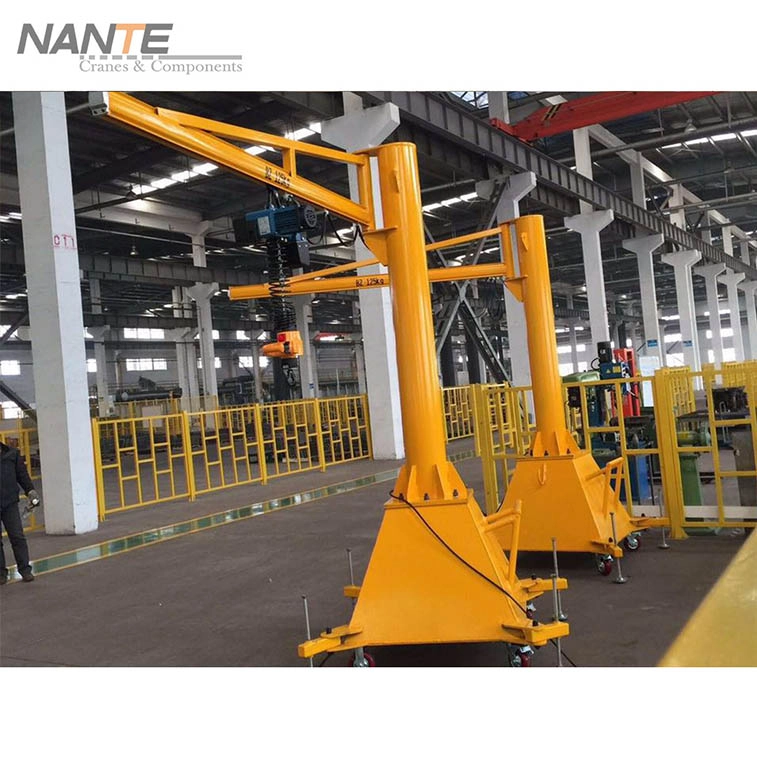How Jib Cranes Solve Lifting Challenges in Space-Limited Environments
Date: 2025-08-22 Share:
Introduction
Busy workshops often have little space. Machines and materials crowd the floor. Big overhead cranes don’t fit well. This causes slow work and safety risks. Workers find it hard to move heavy loads. Jib cranes are small, handy lifting tools. They use space well and boost work speed. These cranes attach to existing structures. They turn easily and lift many weights. This makes them great for tight spots. This article looks at how jib cranes fix lifting problems in small spaces. It covers their features, benefits, uses, and how to pick the right one. Learn about top solutions from Nante Crane to improve workspaces.
Understanding Jib Cranes: Definition and Types
What Are Jib Cranes?
Jib cranes are special lifting tools. They have a flat arm, called a jib. This arm holds a hoist for moving materials in small areas. They mount on floors, walls, or columns. They work well where big cranes can’t go. Their design ensures strength and easy setup in workshops.
Types of Jib Cranes
- Free Standing Jib Crane: Stands on the floor alone. It turns 180° to 360°. Great for small, open areas. Doesn’t need building supports.
- Wall Mounted Jib Crane: Fixed to walls or columns. Saves all floor space. Turns 180°. Perfect for tight workshops.
- Movable Jib Crane: Easy to move and reposition. Suits changing, small spaces. Helps workers adjust to new layouts.
- Wall Travelling Jib Crane: Moves along wall tracks. Reaches far without taking floor space. Ideal for long, narrow work areas.
General Benefits
Jib cranes use seamless pipes, box girders, or profiles. This makes them strong and easy to set up. Their flexibility makes them key for lifting in tight spaces.
Key Features That Make Jib Cranes Ideal for Confined Spaces
Jib cranes are built for trust and accuracy in small areas. Here are their top features:
- Design Standards: Meet FEM, CMAA, ISO EN, BS, GB, and IEC rules. Offer IP55 protection from dust and water.
- Structural Elements: Columns use seamless pipes with simple switch buttons. Jib arms come in box girder, I-beam, or KBK styles. They handle many load sizes.
- Hoist Options: Pick chain, low-headroom, or monorail hoists. Made for exact lifting in low-ceiling spaces.
- Slewing Mechanisms: Manual or motorized turning, 180° to 360°. Easy to move in cramped spots.
- Installation and Maintenance: Socket plug-ins allow fast setup and takedown. Powder-coated surfaces add strength and cut upkeep needs.
- Safety and Efficiency: Automatic lifts ease body strain. Workers stay in good positions, lowering injury risks.
These features make jib cranes vital for lifting in tight spaces.
How Jib Cranes Solve Lifting Challenges in Space-Limited Environments
Jib cranes fix common problems in small workspaces. They offer smart solutions for speed and safety:
- Floor Space Constraints: Wall-mounted or wall travelling jib cranes use walls or columns. This frees floor space. It improves workflow in busy lines and cuts clutter.
- Precision and Reach in Tight Areas: Jib lengths (1.3m-7m) adjust easily. Flexible turning allows exact load placement. No need for full-room crane coverage.
- Capacity vs. Space Trade-Off: Handle loads from 150kg to 5000kg. Lift up to 7m high. Meet big demands in small areas without losing strength.
- Safety in Confined Workspaces: Automatic lifts cut manual work. This lowers injury risks. The design helps workers stay safe in tight spots.
- Cost and Installation Barriers: Cheap and quick to install. Use existing walls or columns. Offer great value for small spaces.
Data shows jib cranes can improve work speed by 20-30% in tight setups. They’re a smart, affordable fix for material handling.
Real-World Applications of Jib Cranes
Jib cranes work well in many industries. They solve Sailfish lifting challenges with custom uses:
- Workshop and Manufacturing: Free standing or wall-mounted jib cranes lift parts in car or machine shops. A small factory might use a pillar-mounted crane to speed assembly. This saves space and time.
- Warehousing and Logistics: Movable jib cranes handle loads in narrow aisles. They reach where big cranes can’t. This boosts workflow.
- Maintenance and Repair Facilities: Free standing jib cranes manage tools in garages or shipyards with low ceilings. They improve safety and speed.
- Construction Sites: Wall travelling jib cranes move materials in city builds with tight spaces. They cut manual work and boost safety.
- Healthcare and Labs: Low-capacity movable jib cranes lift equipment in small, clean rooms. They keep precision without taking space.
For example, a small factory using a wall-mounted jib crane on pillars could boost output by 25%. It cuts hazards and setup time.
Choosing the Right Jib Crane for Your Space-Limited Needs
Picking the best jib crane needs careful thought:
- Key Factors: Check load capacity (150kg-5000kg), jib length (1.3m-7m), lifting height (up to 7m), turning type (manual or motorized), and site needs.
- Practical Tips: Look at the site layout. Use wall-mounted jib cranes to save floor space or free standing ones for open areas. Choose low-headroom hoists for low ceilings.
- Expert Guidance: Talk to pros for custom designs that meet FEM standards. This solves specific lifting problems in small spaces.
Visit Nante Crane for tailored solutions to improve your workspace.
Nante Crane: Your Trusted Partner in Jib Crane Solutions
Frequently Asked Questions
What is a jib crane and how does it work?
A jib crane has a flat arm, called a jib. It holds a hoist. It mounts to a wall, column, or floor. The hoist lifts and moves loads. The jib turns 180° to 360° for exact placement in small spaces.
How do jib cranes save space compared to other cranes?
Wall-mounted and wall travelling jib cranes use existing structures. They free up floor space. Their small design and flexible turning need less room.
What capacities do jib cranes support?
Jib cranes lift 150kg to 5000kg. They reach up to 7m high. They suit many industrial needs.
Are jib cranes suitable for outdoor use?
With IP55 protection, jib cranes work outdoors. They stay strong against weather.
How easy is it to install a jib crane?
Jib cranes use socket plug-ins and simple designs. They set up fast, often using existing walls or columns.
What maintenance do jib cranes require?
Check hoists, turning parts, and coatings regularly. This keeps them strong with little upkeep.
Where can I learn more about jib crane options?
Find many jib crane solutions at Nante Crane.





